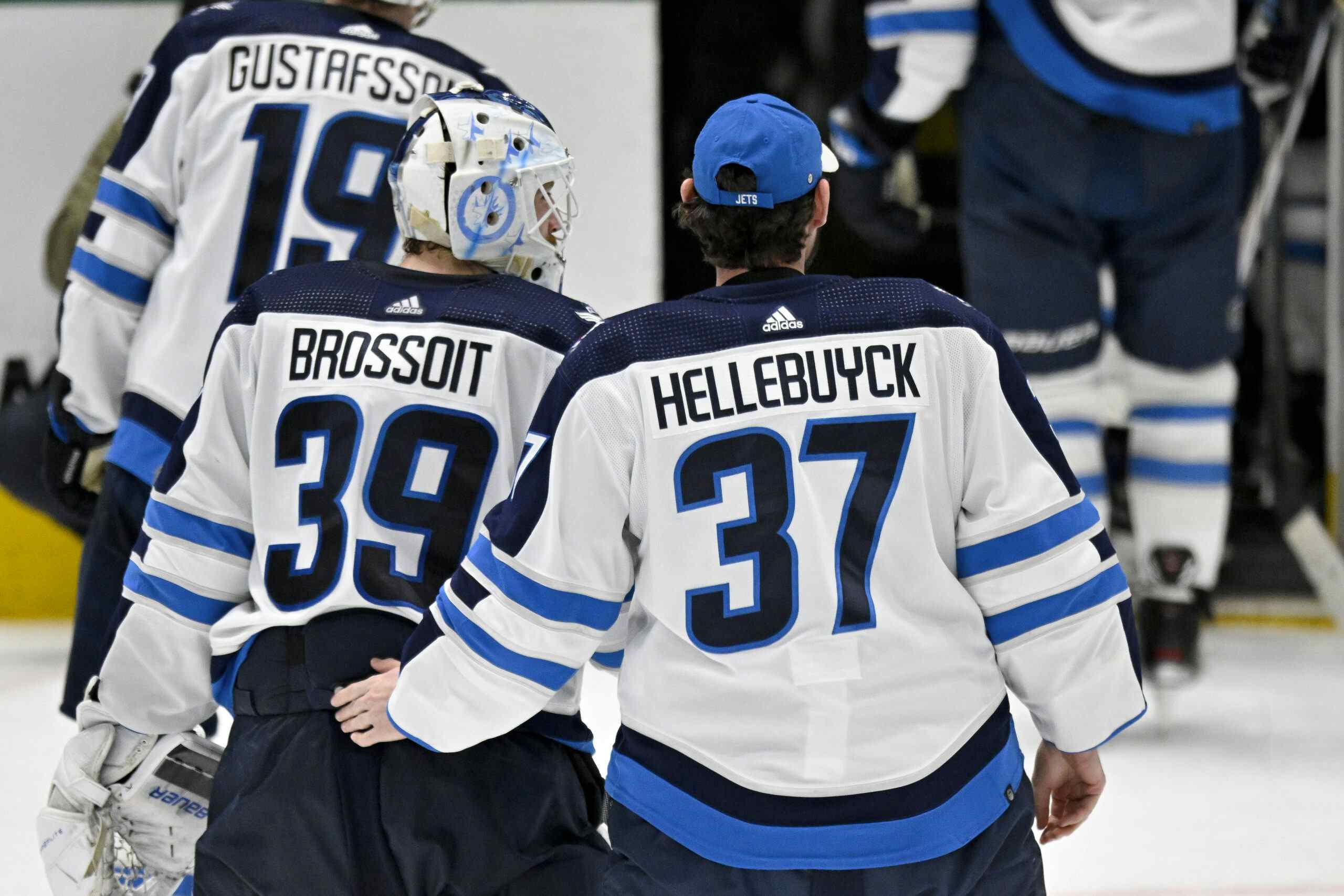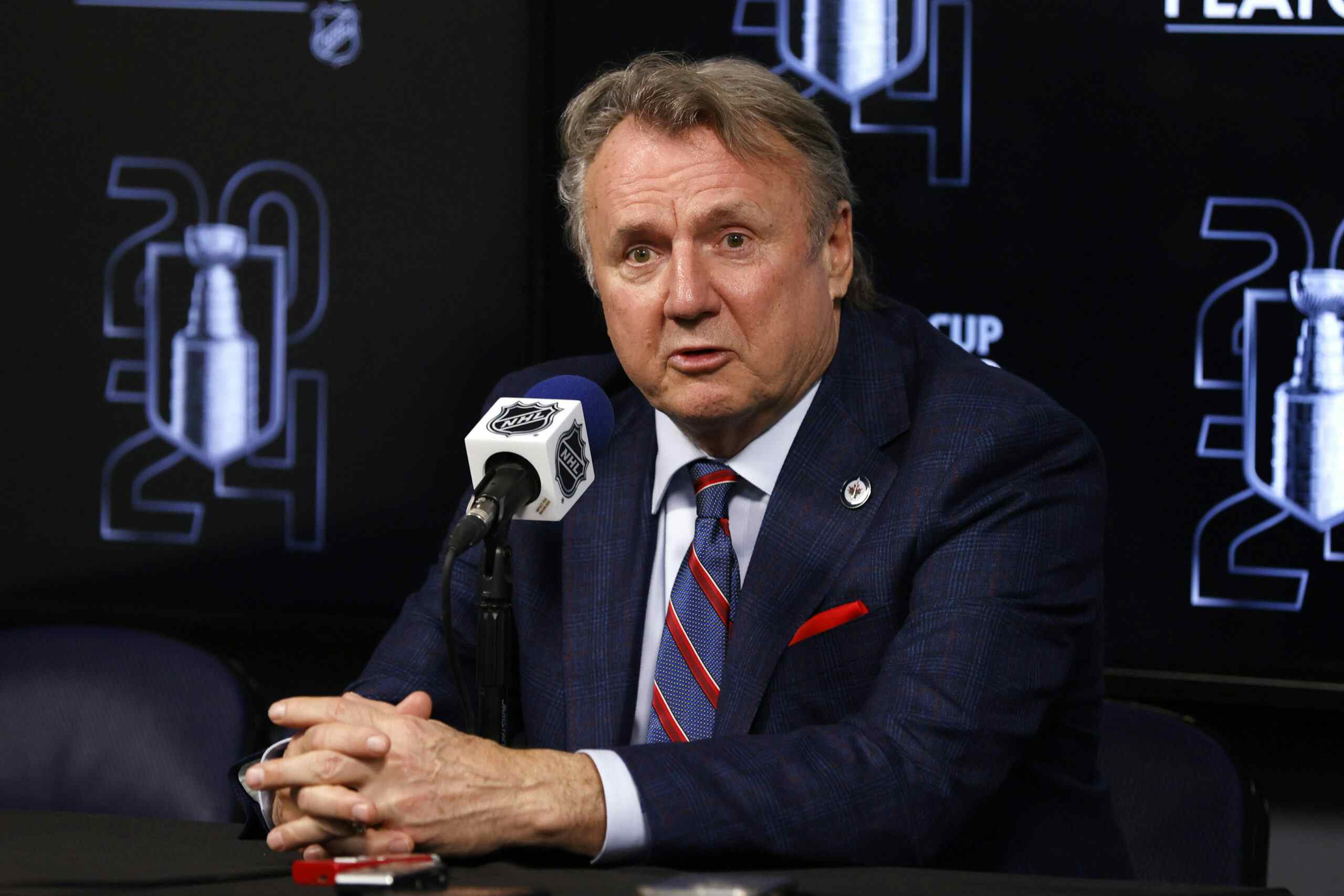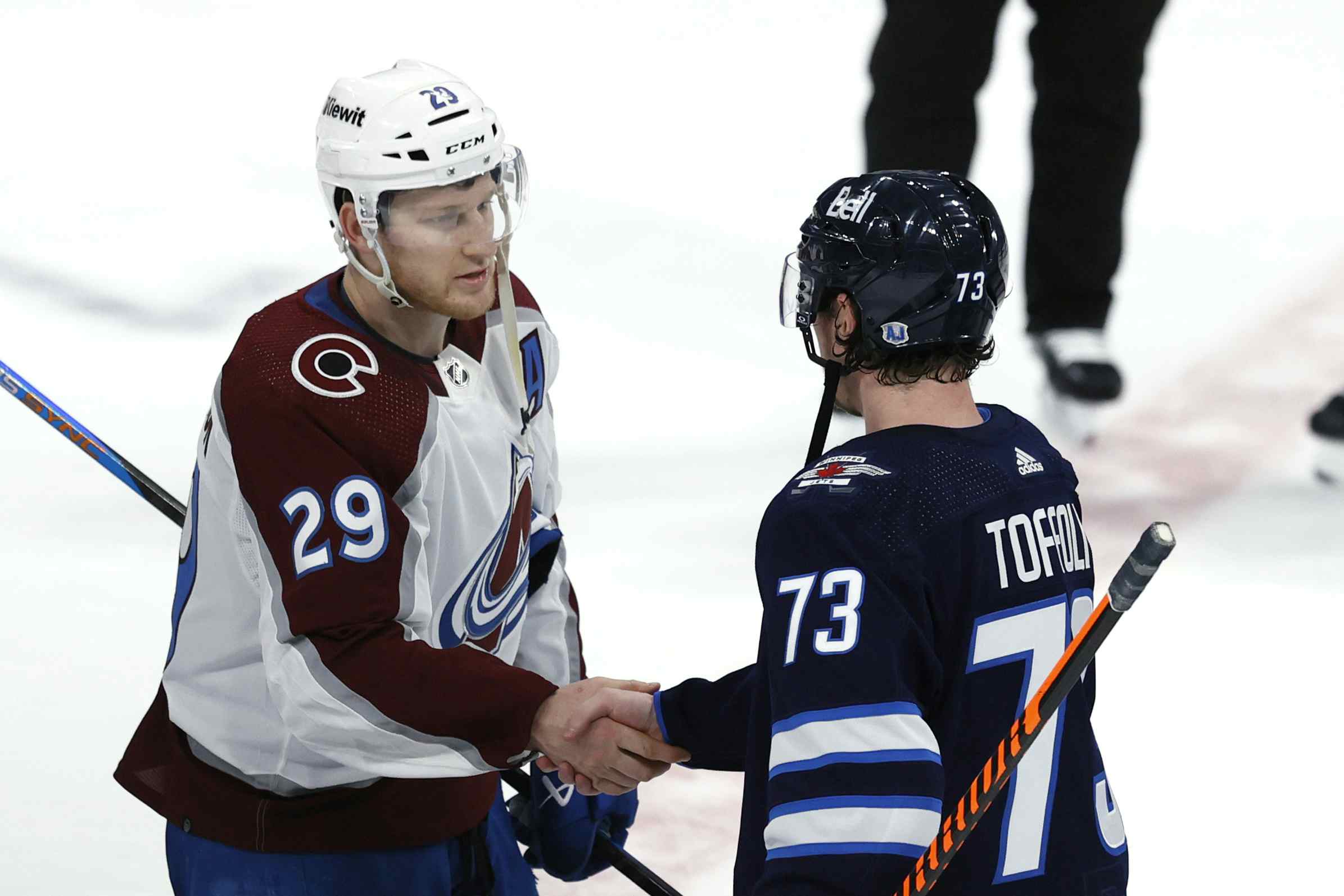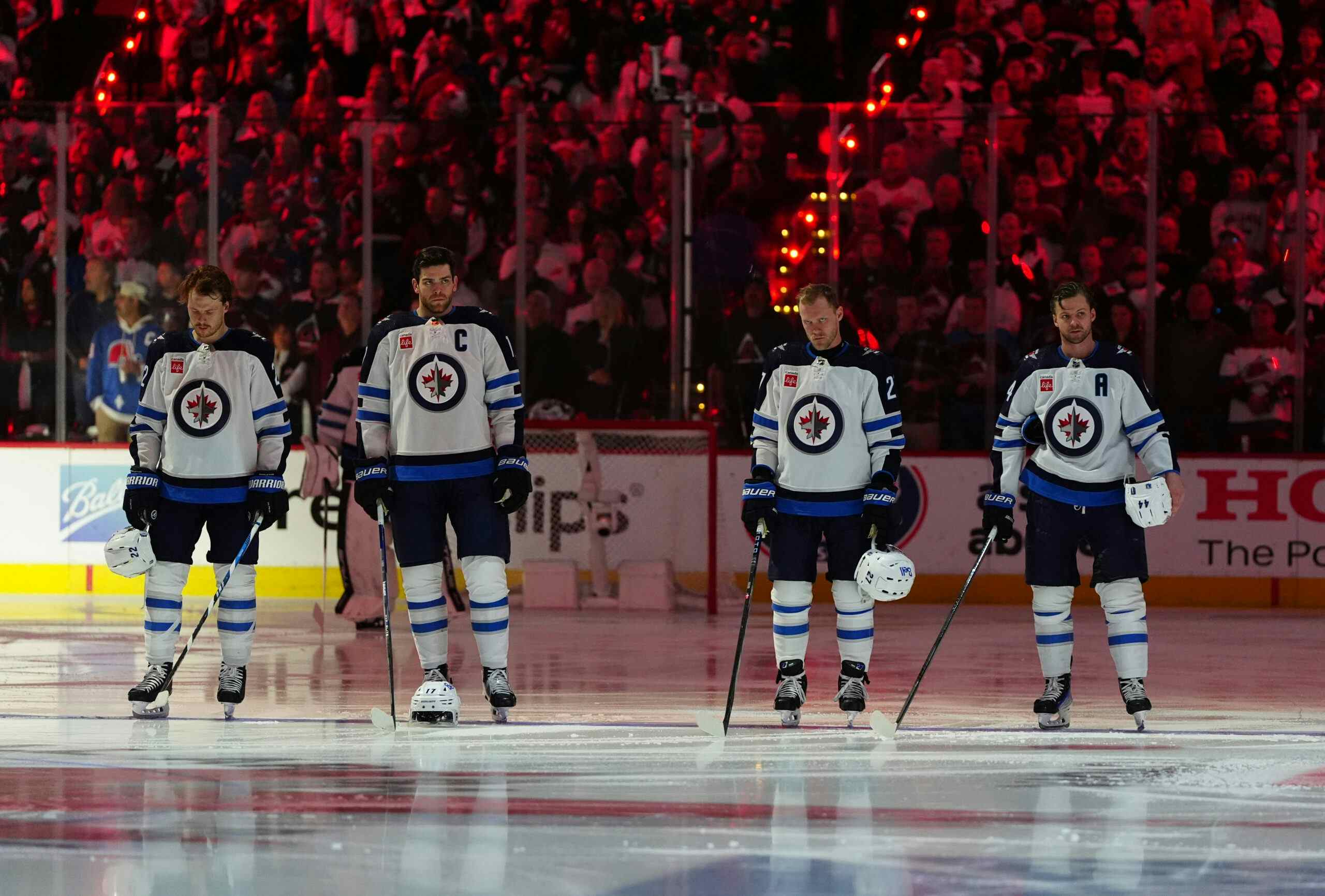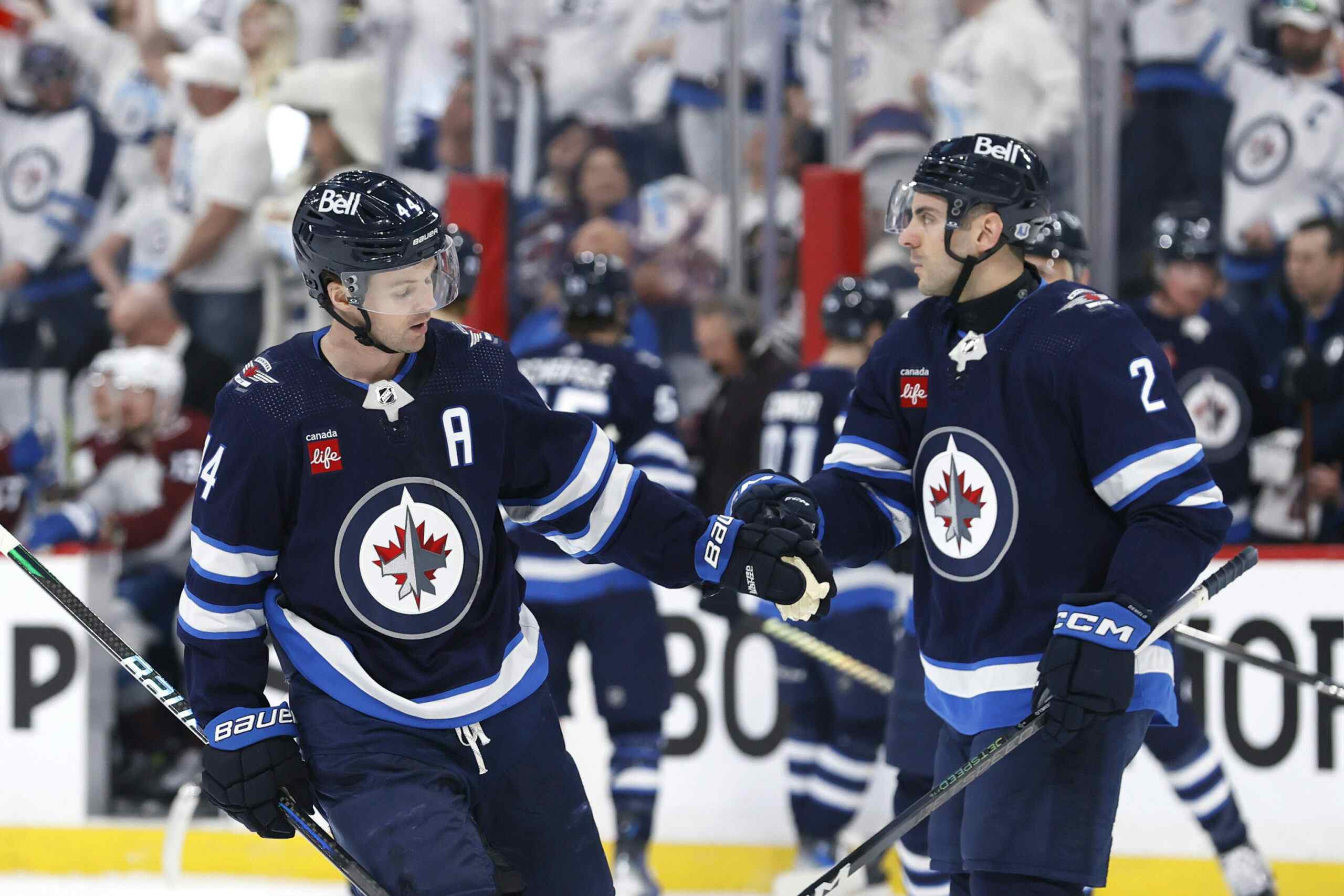Jets 2013/14 Season Preview: Hope in the Face of Reason

Photo by A Canadian View
Okay, okay. You got us. Typically, a site might give its Preview before the season started. Dogged by the questions of yester-year, and lacking even a single pre-season game with a regular season line-up, we wanted to wait to get our eyes on the real deal before we made our predictions. (Alternatively, maybe the Nations Network trusted this site to a lay-about. I mean, seriously, my resume pretty much screams ‘hippie.’)
We’ve still barely scratched the surface, with 80 (or more!) contests to go for the Jets. There’s still a lot to look forward to. And get defensive about. Also, goalies.
Inside we’ll take an in-depth look at the 2013/14 season for the Winnipeg Jets.
The Story
After two narrow misses at the post-season, the buzz around the Jets’ third NHL year is naturally their illusive first playoff entry. The moves in the off-season – including the team moving to the Western conference – serve as component parts to this ultimate narrative. Each component is an emotional hook into the season, but also a list of ready-made excuses should the final result be less than we hope.
Can the team find secondary scoring with new additions Setoguchi and Frolik? Will the Big Three contracts from the summer live up to their dollar values? Can rookies Mark Scheifele and Jacob Trouba make an impact at the NHL level? Will Pavelec finally take a step forward this year? Can the coaching staff improve the special teams? And maybe the largest storyline of the season – can the Jets find success in the tighter-checking West, especially in light of having cup contenders St Louis and Chicago in their Division?
The Facts
Systems
The Jets have an usual set of systems of the Central Division, which I suppose isn’t surprising given than they’re new to the club. When we talk about these extremely successful two-way teams, we’re often referring to a particular organization in defending the neutral zone, and in particular, defending transition through the neutral zone.
This has been simplified into the sound-bite ‘the trap,’ but in fact St Louis and Chicago both use aggressive up-ice pressure – much different than the Minnesota or Nashville systems that come to mind when someone talks about the trap. But all of them bottle up the neutral zone. The Jets, however, use two forecheckers as well as strong-side F3 pressure and prefer to take away the easy breakout play while giving up the neutral zone. Whaa?
Like this! (Notice how Tangradi supports on the side the puck is on, along the boards so that if an Oilers defenceman tries to chip it up the wall, it’s a turnover. He has to make a harder, slower play with the puck, which gives the two men on the puck a better chance of gaining possession.)

Or like this! (Notice Wheeler moving from the side the puck is on, called strong-side, toward the open wing when the pass is made.)

This forecheck means other teams have to reverse it to break out, but when they do, that vertical lane is open and they can build up a lot of speed before even reaching the neutral zone. Jets’ defenders pretty much have to give up the neutral zone because they don’t have much support from the forward group.
Combined with their vertical offence, the Jets generally prefer to skip the neutral zone. It’s not a popular choice in the Central.
While the Jets managed to be square in the middle of the league for corsi % – that is, the % of shot attempts for rather than against – it actually came from being 9th in shot attempts for per 60 minutes of 5 on 5 hockey, up to 8th when the score was close. Of course, where four of the Central Division teams were in the top ten for preventing shot attempts against per 60 minutes, the Jets ranked 25th, and 26th when the score was close.
Put with less jargon, Jets games involve very little time in the neutral zone, and a lot of time at each end flinging rubber. They play a high-event style with constant transition, like to create off the rush, and back down their defenders in the neutral zone such that other teams have the opportunity to create off the rush as well.
Once in set-zone play, the Jets use a swarm at both ends, putting three people on the puck at all times. In the defensive zone, it serves to protect the Jets’ under-sized defence group from having to battle one-on-one. In the offensive zone, it creates second opportunities through increased pressure. In both cases, when there’s a leak, it can lead to disaster.
In the Central Division, the Jets will be trying to beat the trap with their speed and vertical passing all season. Their patient rivals will occasionally drop periods or even games to the Jets, but may win the season series if the Jets swarm gives up opportunities at either end of the rink.
Forwards
- IN: Scheifele, Setoguchi, Frolik
- OUT: Wellwood, Antropov, Miettinen, Burmistrov, Santorelli
The primary strength of the Jets is at forward. Captain Andrew Ladd led the Jets 11th ranked even strength offence with 46 points in 48 games, but it was just the icing on a season of driving the play the right way in a power-vs-power role – playing other teams’ best every night. Together with Bryan Little and Blake Wheeler, the top line was the best part of the Jets a year ago, and are expected to pick up where they left off.
Of concern is that Andrew Ladd’s offence was partly percentage driven. By that, I mean that luck was on his side, and more went in the net than we can reasonably expect to happen a second year in a row. His on-ice shooting % (the Jets’ shooting % when Ladd was on the ice) was a team-leading and career high 11.4% at even strength. It may seem like a small difference, but had his on-ice shooting % been closer to his career average of 8.5%, we could reasonably expect him to come in a little closer to Evander Kane’s scoring totals on the year. Far from a poor season still, but also a long distance from Beast Mode good.
Last year, the team relied on just four forwards to do the scoring – the LLW line plus Kane – and the departed Kyle Wellwood and Nik Antropov have been the team’s best scorers outside that foursome since arriving in the Peg. With Ladd’s offence sure to regress (both statistically speaking of fitting closer to a normal curve line, and rhetorically as in taking a step back), it will be up to Scheifele, Setoguchi, Frolik, and improvements by the young Kane and the unexpectedly poor Olli Jokinen to improve the Jets’ scoring.
That said, the team was tied for 9th in 5 on 5 goals for, and 11th in 5 on 5 goals for per 60 minutes of even strength ice time last season. As we talked about above, the Jets very aggressive offensive forecheck leads to a lot of shot attempts and scoring chances, and the Jets have been able to create offence even without the sort of players that go in the first round of fantasy drafts.
Most of the Jets’ needed improvement has to come with the man advantage, where the team scored a 29th best (2nd worst) 18 goals a season ago and ranked 25th in goals for per 60 minutes of powerplay time. Two seasons ago, the Jets were considerably more effective, ranking 8th in goals per 60. That year, Blake Wheeler was the highest scoring forward with the powerplay, and specialist Tim Stapleton led an effective second unit that included Wellwood and Antropov. The Jets no longer employ a powerplay specialist (or three) and are hoping that their even strength second line can pump the scoring as a powerplay second unit as well.
All told, it speaks to a definitive split in the top-6/bottom-6 that this team has never previously had. Even now, Michael Frolik and Olli Jokinen are hardly quintessential third-liners, both arguably tweeners on an NHL roster. With long-term contracts north of $4M given to all of Ladd, Little, Wheeler, and Kane now, the team is becoming top-heavy and the minutes will reflect that this season.
Look for the LLW line to continue to draw tough assignments, as Olli Jokinen and Jim Slater are simply not good enough, and Scheifele too raw, to take on the likes of Mikko Koivu, Jonathan Toews, or Matt Duchene. Beyond that, the team finally has the opportunity to support Kane with some offensive zone starts on the back of Michael Frolik.
One wrinkle in the Jets defensive work this year will be the return of Jim Slater. The team is said to have missed the veteran face-off man, but in fact Noel’s lack of trust for the rotating cast of replacements actually placed heavier minutes on his more capable forwards. In essence, the Jets played with 3 lines last season – giving all of Thorburn, Peluso, Cormier, and Gagnon very limited minutes, and cycling Tangradi into other lines on occasion to get him all the way to a whopping 10 minutes a game.
Jim Slater is known for spending his whole game in his own end, blocking shots, hitting people, and generally hanging on for dear life. He does win faceoffs, but had his best offensive season ever in year one with the Jets – 21 points – but was -9 and had a shocking RelCorsi of -27. That means, relative to how many shots the Jets get and give up in general, Slater was the-worst-ever-oh-my-gawd-get-him-off-the-ice as part of the GST line.

Photo by Matthew Britt
Defence
- IN: Adam Pardy, Jacob Trouba
- OUT: Ron Hainsey, Derek Meech
The challenge with this Jets team is keeping the puck away from, and ultimately out of their own net. Their 11th place even strength offence is erased by a 26th placed even strength defence by goals against per 60, and 25th by shot attempts against. Combined with a bottom-end penalty kill, the Jets flat out failed to defend.
Gone is the much-maligned Ron Hainsey, who played the Jets’ toughest minutes last season with an injured and young partner in Bogosian. In his place is rookie Jacob Trouba – a player with more physical gifts but less proven ability to use them. Adam Pardy was brought in presumably as Mark Stuart insurance so that the team can always have a confused but angry guy running around their own zone. Already waived from a team with seven defenders on the roster and Zach Redmond waiting in the wings, Pardy seems to have fallen into the Derek Meech 9th man spot. As you all remember, the Jets used that 9th man in a full third of their games in 2012/13. As you probably also remember, it wasn’t the feel-good story we all hoped for the Winnipeg native, and the Jets asked him to pack his chaos and hit the road in the summer.
The story of the Jets defence is in the very presence of Meech’s name on so many score sheets, as the team lost all of Enstrom, Bogosian, and Redmond for major parts of the season, as well as Byfuglien for a shorter stretch. The injuries were impossibly aligned such that the team never iced its best top-6 at once in 48 games. But they were not unexpected.
Bogosian has never had a healthy season, though he did play through several injuries his sophomore year to make 81 games. Enstrom hasn’t had a full season since 2009/10. Byfuglien, too, has missed time in both his seasons with the Jets. The Jets have a top-heavy defence group as well, and depth is a major concern.
One thing the Jets can boast is above average scoring from the back-end, having six defender score above the NHL defenceman median scoring rate per 60 minutes last year, and Paul Postma tie it. Things were even better in the heady days of 2011/12, when Byfuglien, Enstrom, and Bogosian were 3rd, 8th, and 9th in total scoring on the team even though none of them played more than Buff’s 66 games. Byguglien has led powerplay scoring for the Jets both seasons past, and will be asked to do the same again this year as the team continues to work with an Umbrella unit with Enstrom as the set up man for Byfuglien’s dynamic presence at the top. When put together, the duo is a top-pairing in the league at generating more opportunities than they give up at evens and deadly on the powerplay, despite some walk-about play by Buff and the diminutive stature of Enstrom.
The team needs those two to continue a history of winning the scoring chance and shot attempt battle, and to jump start the Jets’ vertical offence. But they also need more help. Ron Hainsey was under-rated as a puck mover here in Winnipeg, but the addition of the CCHA Offensive Defenceman of the Year winner Jacob Trouba can only have a positive effect on already impressive scoring numbers. Still, few 19 year olds do well against tough opposition in the NHL, and Mark Stuart proved incapable of shouldering the load in seasons past. Postma has his own defensive zone issues, and so waiver-wire pick up Grant Clitsome and the oft-injured young-stud Zach Bogosian will be tasked with the heavy defensive lifting (though not always together), and may be over their heads if Enstrom or Byfuglien (or both) get hurt.
As we’ve covered, the Jets systematically give up a huge number of shot attempts, and success will rest more on the ability of this blue line to transition the puck out of danger than on their ability to keep the shooters at bay. If injuries mount for a third straight year, the Jets will be spending a lot of time in their own end, and we’ll be spending a lot of time watching Pavelec’s wild play.
Goalies
- No changes
The more things change for the Jets, the more they stay they same. Ondrej Pavelec returns in goal after a vote of confidence from Kevin Cheveldayoff to end last year in which he said, "his best games are in front of him." Well, Chevy, it can’t get much worse.
Among goalies with 500 minutes or more between the pipes last year, Pavelec ranked 39th in even strength save percentage – behind such luminaries as Mathieu Garon and Dan Ellis (well behind Dan Ellis). We’ve talked about it before, but we’re cursed with talking about it again. Montoya was given six starts last season, despite Pavelec badly struggling in back-to-back contests. His total save % explodes all the way to .912 when we remove his six second-night performances. That’s almost respectable, but he still doesn’t make the first page on NHL.com’s stat listings if you know what I mean. Also – it doesn’t mean the Jets win those games, since Al Montoya’s .899sv% isn’t exactly world class among backups either.
In pre-season, Winnipeg media asked Claude Noel about Pav being left off ESPN’s top 25 goalie list and Noel agreed with it, saying his numbers had to get better. It was music to our ears – the team realizes! – but still doesn’t come with a plan for how to help him beyond blind hope and the poorly considered expectation that a 26 year old with 230 NHL games is still developing meaningfully.
By eye, Pavelec often gets credit for his fast glove hand and stunning skin-of-his-teeth saves. Of course, studious observers have long recognized that he struggles to track the puck, giving up large rebounds and being out of position for typically high-percentage saves. His athleticism is on display precisely because his awareness is not.
In the swarm defence, rebound control can be even more critical. Where a collapsing team will out-number the opposition in the dangerous area of the ice more plays than not, the swarm is rarely in position to do that. If rebounds are put to the weak-side (where, in fact, they often come from), the defenders are of limited help to the goalie. Moreover, the Jets relatively small, less physical defence group is just not going to box out and control the slot well. It’s an unreasonable expectation. But it’s also a disastrous combination with a goalie who can’t track the puck into and away from himself. It’s made worse that Pav can’t read lateral movement through a crowd, and the Jets always defend in a crowd. That’s kinda the whole deal.
It’s been 8 years since Pavelec was drafted. His career numbers in the NHL are 2.96 GAA and .907 sv %. Until this team gives him real competition for his minutes in the form of a capable NHL platoon or back-up goalie, the Jets are going to struggle to close out games late, struggle to win low-scoring games, and struggle to make the playoffs in the West where those things are critical.
Strength of Schedule
One of the ways to measure the change in Division is the change in strength of schedule. Going into last season, the Jets had the 25th hardest schedule (aka 5th easiest) in the league. This season, they face the 17th hardest schedule by average win percentage of opponents. With the Predators and Avalanche having truly dismal campaigns last year, that number is likely skewed lower than the actual quality of teams faced by the Jets.
All the way back in April, we discussed the Jets’ struggles against Western conference teams, and in particular those in the new Central Division.
- Jets’ combined record against the now defunct South East: 23-14-4
- Jets’ combined record against rest of East: 29-33-8
- Jets’ 2011/12 record against West: 8-9-1
- Jets’ 2011/12 record against new Central Div teams: 3-4-1
- Central Division’s combined 2011/12 record against SE: 27-15-2
The Central has won more against the Southeast than Winnipeg has, and certainly had more success against other Western conference teams. The Jets have a few advantages in the schedule – just 10 back-to-back games and playing Chicago only four times are among them – but overall it’s going to be much harder season.
Future Hope and Expectations
This is the first year of season ticket renewals in Winnipeg, and so the team is selling a bit of hope for the future. Of course, Scheifele and Trouba on the team are a bit part of that, but so too was the very successful and unexpectedly skill-focused draft in 2013.
Short-term
In the immediate future, this team is on the playoff bubble with a few very solvable problems. Scheifele and Setoguchi have been brought in to resolve the long-standing lacking of secondary scoring and to better support star forward Evander Kane.
The remaining issues are well known to all – depth, goaltending, and special teams. The Jets with league-average goaltending and specials teams would have finished well-inside the playoffs last year, and could earn them the third Divisional playoff spot this year. The team took strides in this direction over the summer, adding Frolik in particular. But with Burmistrov gone, it’s hard to argue they moved much further ahead in solving their PK and forward depth troubles. Moreover, Adam Pardy is about a bucket of talent short of helping a heavily burdened and injury-prone defence group.
The Jets sit in a position to improve the club to compete for a playoff spot should they be close come the deadline again, or – more likely – if hope isn’t selling well enough.
Medium-Term
The 2014 draft class is somewhat weaker than recent years, and it’s a good time for the Jets to push for a playoff birth with Setoguchi and Jokinen in their final years. The Jets maintain a mantra of building from within, but sit on $93M in contracts signed to three players in their primes this past summer. There is tension in how the team is building, with no obvious window of opportunity emerging, but none closing either. No doubt a defenceman will shake loose from Toronto. Perhaps a forward from Tampa Bay or Ottawa. It seems General Manager’s prerogative as to whether they intend to compete now or continue to stock pile 18 year olds.
Longer-Term
It’s very early, but the returns on the 2013 draft class are excellent. Morrissey and Petan are both likely NHL players, while Lipon, Lodge, Kichton, and Kostalek all have arrows in the right direction. That’s remarkable.
In net, Connor Hellebuyck and Eric Comrie are the headliners of a very promising group that includes surprise Freshman Jason Kasdorf and new pro Juho Olkinuora.
Adam Lowry will start in the AHL this season, but could force his way onto the roster before the season is through, and both Eric O’Dell and Zach Redmond are likely ready for spot NHL duty as well. Julian Melchiori continues to make a case as prospect of interest, as well. In most respects, the future feels bright in Winnipeg.
Still, the drafting record of Head Scout Marcel Comeau is extremely poor, and it has to give us some pause that he was involved in the selection of the class of 2013. Why the sudden change from a preference for big fish in little ponds, and ‘foxhole’ (his word) warriors to this skill-based drafting? We can hope his philosophy has been over-ruled.
As well, Ivan Telegin is currently suspended by the team for not reporting the St John’s, and Alex Burmistrov is playing overseas. It seems the Cold War is alive in Manitoba, and it’s hurting the Jets already thin prospect pool.

Photo by Braydon M
Fans gather for Jets announcement, June 1, 2011
Outlook
The truth is that this team is relying on huge seasons from two rookies, and a number of things to go their way – from Enstrom’s health to Pavelec’s mythical ‘step-forward’ we’ve been hearing about for 8 years. NHL seasons rarely work out the way you hope, and it’s a ‘prepare for the worst’ kind of business. The Jets are far from prepared, and so I’m predicting 10th in the West.
That 10th comes with some very good stretches of hockey, some lucky streaks as well, but also some miserable nights when the team is banged up, out-muscled, and out-coached. Without some basic additions to improve the penalty kill and defensive group, this team won’t improve its lot in the league as playoff bubble team. And until Pavelec is out-played for the starter’s job, the Jets will struggle to put together more than an 8th place finish.
Recent articles from Kevin McCartney

